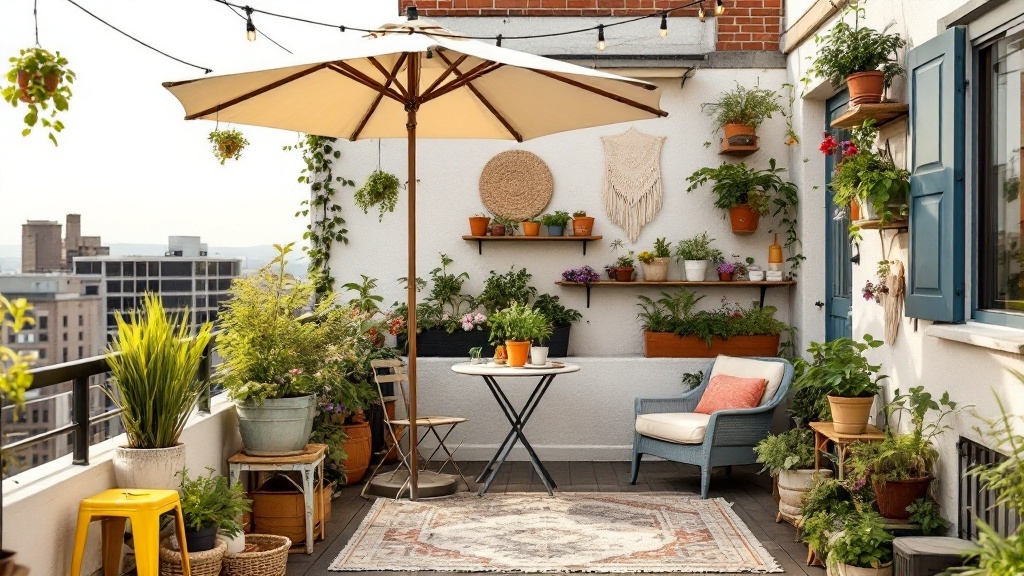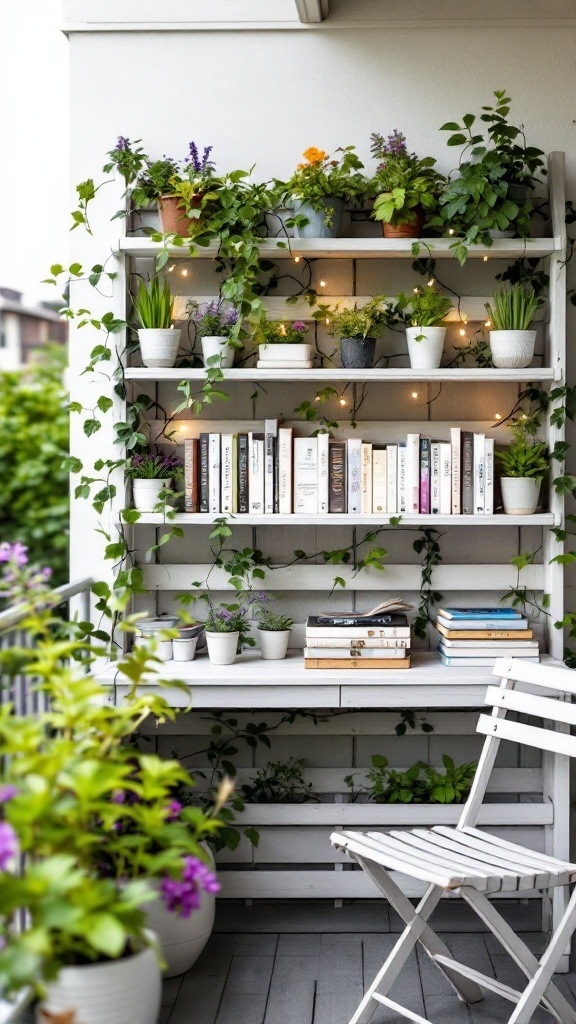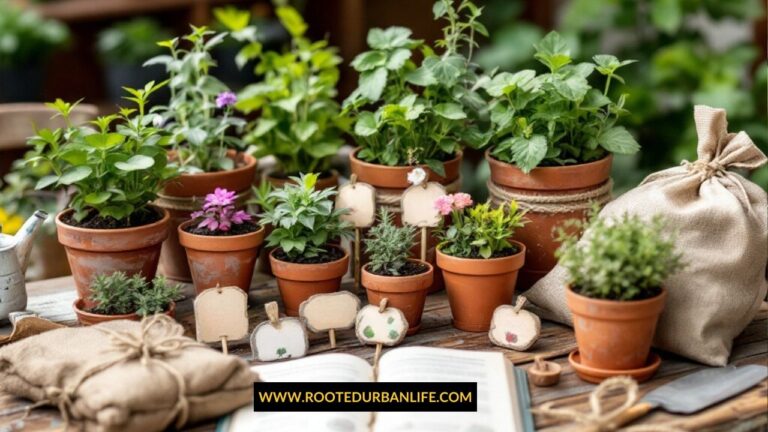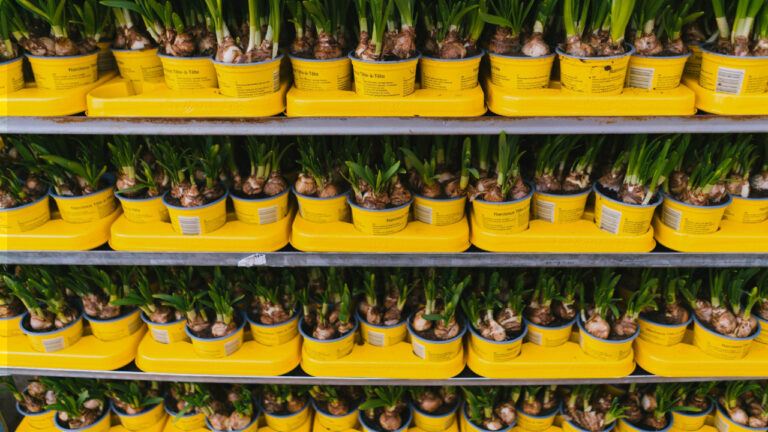How to Build a Thriving Rooftop Garden: Choose the Right Plants, Maximize Space
The Urban Gardener’s Ultimate Guide to Maximizing Your Rooftop Potential
Challenge You’re living in a concrete jungle with limited space, but you’re STILL dreaming about growing your own food and creating that green sanctuary. I get it. Most people look at their barren rooftop and see nothing but wasted potential. They make excuses. “It’s too hot,” “It’s too windy,” “I don’t have enough space.” STOP WITH THE EXCUSES! Your rooftop is prime real estate that’s just waiting to be transformed.
What you will learn In this guide, you’ll discover exactly how to select the right plants for your specific conditions, maximize every inch of your space, and maintain a flourishing garden that will make your neighbors jealous.
You’ll learn proven techniques for harvesting fresh produce year-round, troubleshooting common rooftop challenges, all while working with whatever space you have.
Ready to stop dreaming and start growing? Let’s dive in.
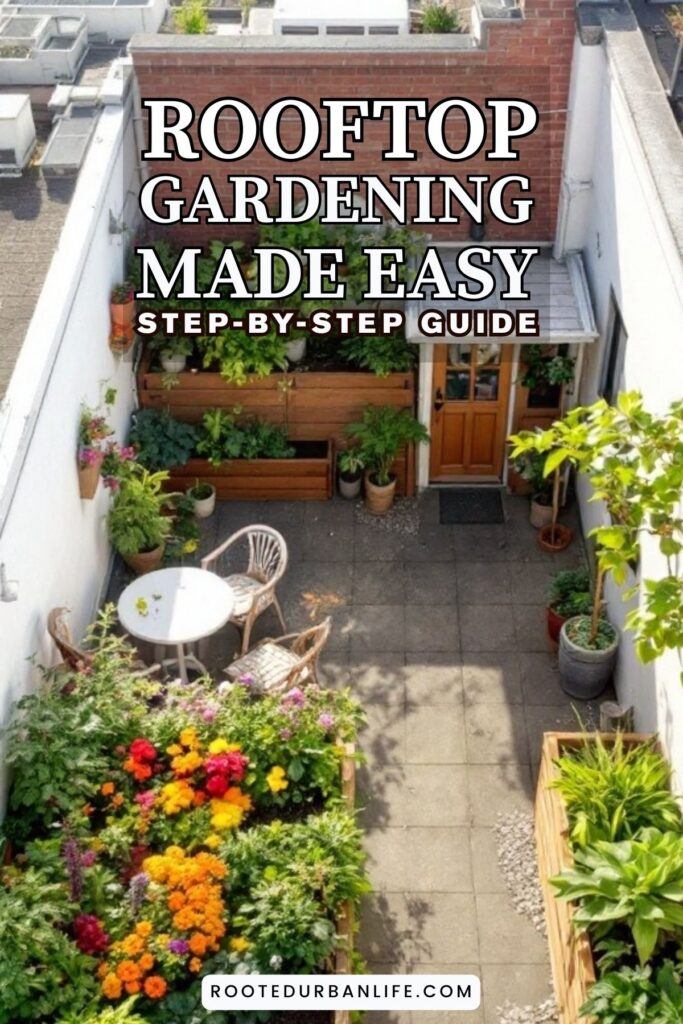
Recommended Resources
Before we get into the nitty-gritty, here are some essential tools that will make your rooftop gardening journey infinitely easier:
- Lightweight, durable containers – Critical for plant health and roof protection
- Moisture-retaining potting mix – Saves water and keeps plants happy
- Automatic drip irrigation system – A true game-changer for busy gardeners
- Shade cloth or pergola – Essential for managing intense sun exposure
- Wind barriers – Protect delicate plants from gusts
- Lightweight garden tools – Ergonomic and easy to store
Pro Tip: You don’t need everything at once. Start with quality containers and soil, then add other items as your garden grows.
1. Choosing the Right Plants: Your Foundation for Success
The plants you select will make or break your rooftop garden. I learned this the hard way when my first attempt failed miserably because I chose plants that couldn’t handle the harsh rooftop conditions.
Top Performers for Rooftop Gardens
| Plant Type | Best Varieties | Light Needs | Water Needs | Container Size |
|---|---|---|---|---|
| Herbs | Rosemary, Thyme, Lavender, Sage | Full sun | Low | 12″ deep |
| Leafy Greens | Kale, Swiss Chard, Arugula | Partial sun | Medium | 6-8″ deep |
| Vegetables | Cherry Tomatoes, Bush Beans, Peppers | Full sun | Medium-High | 12-18″ deep |
| Drought-Tolerant | Succulents, Sedums, Ornamental Grasses | Full sun | Very Low | 6-12″ deep |
| Flowering Plants | Marigolds, Sunflowers, Nasturtiums | Full sun | Medium | 8-12″ deep |
| Brought to you by rootedurbanlife.com | ||||
Practical Implementation:
- Evaluate your rooftop conditions – Track sun exposure, wind patterns, and temperature fluctuations for one week.
- Test your roof’s weight capacity – Consult with a structural engineer if you’re planning anything beyond container gardening.
- Group plants by water needs – Create hydrozones to streamline maintenance and water efficiency.
- Choose multi-purpose plants – Opt for edibles that are also attractive or flowers that attract pollinators.
- Start small – Begin with 5-7 hardy, proven performers before expanding.
Warning: Avoid invasive species with aggressive root systems that could potentially damage your roof membrane.
Picture Your Space: Imagine stepping onto your rooftop after a long day, surrounded by the aromatic scent of fresh herbs and bright pops of colorful vegetables. Your friends marvel at how you’ve transformed a previously unused space into a productive garden that provides fresh ingredients for your dinner table. The satisfaction of plucking a sun-warmed tomato from your own urban garden makes all the effort worthwhile.
2. Designing Your Versatile Outdoor Living Space
Your rooftop garden isn’t just for growing – it’s an extension of your living space. I transformed my rooftop into three distinct zones that serve different purposes throughout the day.
Practical Implementation:
- Map your space – Create a to-scale drawing of your rooftop, noting structural elements and weight-bearing capacity.
- Define your zones – Designate areas for growing, dining/entertaining, and relaxation.
- Create visual boundaries – Use container groupings, outdoor rugs, or portable screens to define spaces.
- Incorporate multi-functional furniture – Choose pieces that provide seating and storage.
- Add shade elements – Install umbrellas, canopies, or pergolas for comfort during hot days.
Pro Tip: Use vertical space! Wall-mounted planters, trellises, and hanging baskets can double your growing area without taking up precious floor space.
3. Mastering Eco-Friendly Gardening Practices
Sustainability isn’t just good for the planet – it makes your garden more resilient and affordable in the long run.
Practical Implementation:
- Install a rainwater collection system – Even a small barrel can capture significant water during storms.
- Set up drip irrigation – Reduce water waste by delivering moisture directly to plant roots.
- Create a composting system – Use compact vermicomposting bins to turn kitchen scraps into garden gold.
- Add solar-powered lighting – Illuminate your garden at night without increasing your electricity bill.
- Choose recycled materials – Look for planters made from sustainable or upcycled materials.
4. Seasonal Planning for Year-Round Harvests
One of the biggest mistakes is treating your rooftop garden as a summer-only project. I’ve learned to maximize my harvests by planting with all four seasons in mind.
Seasonal Planting Calendar
| Season | What to Plant | Maintenance Tasks | Harvest Expectations |
|---|---|---|---|
| Spring | Leafy greens, peas, radishes | Prepare containers, start seeds | Early greens, spring herbs |
| Summer | Tomatoes, peppers, eggplants | Regular watering, pruning | Peak vegetable harvest |
| Fall | Kale, chard, broccoli | Plant cool-season crops | Extended vegetable harvest |
| Winter | Garlic, cover crops, cold frames | Protect containers, maintain cold frames | Winter herbs, select greens |
| Brought to you by rootedurbanlife.com | |||
Practical Implementation:
- Create a seasonal planting calendar – Map out what to plant month by month in your specific climate zone.
- Invest in season extenders – Use cold frames, row covers, or mini-greenhouses to protect plants.
- Implement succession planting – Stagger plantings every 2-3 weeks for continuous harvests.
- Prep for extreme weather – Have plans in place for heat waves, freezes, and storms.
- Maintain a garden journal – Track what works and what doesn’t across seasons.
5. Harvesting and Preserving Your Bounty
The joy of harvesting your own food is unmatched. I’ve found that proper harvesting techniques can actually increase your garden’s productivity by 20-30%.
Practical Implementation:
- Harvest in the morning – Vegetables and herbs have the best flavor and longest shelf life when picked early.
- Use proper cutting techniques – Sharp, clean tools prevent damage to plants.
- Process immediately – Prepare harvested produce for storage right away.
- Learn basic preservation methods – Master freezing, drying, and refrigeration techniques.
- Create a harvest schedule – Some plants produce more when harvested regularly.
Preservation Methods Quick Reference
| Produce Type | Preservation Method | Shelf Life | Equipment Needed |
|---|---|---|---|
| Herbs | Drying, freezing | 6-12 months | Dehydrator or freezer |
| Leafy Greens | Refrigeration, freezing | 1 week-6 months | Refrigerator, freezer |
| Tomatoes | Freezing, canning | 6-12 months | Freezer, canning supplies |
| Root Vegetables | Cool storage | 1-3 months | Cool, dark space |
| Peppers | Drying, freezing | 6-12 months | Dehydrator or freezer |
| Brought to you by rootedurbanlife.com | |||
6. Troubleshooting Common Rooftop Garden Challenges
Every garden faces obstacles, but rooftop gardens have unique challenges. I’ve encountered (and solved) most of them through trial and error.
Practical Implementation:
- Create wind barriers – Use trellises, screens, or strategic plant placement to minimize wind damage.
- Manage extreme temperatures – Use mulch, consistent watering, and shade cloth during heat waves.
- Address weight concerns – Choose lightweight containers and soil mixes designed for rooftop use.
- Prevent drainage issues – Ensure all containers have adequate drainage and are slightly elevated.
- Deal with pests naturally – Implement companion planting and organic pest control methods.
| Problem | Symptoms | Solution |
|---|---|---|
| Heat Stress | Wilting despite watering, scorched leaf edges | Install shade cloth, increase watering frequency, apply mulch |
| Wind Damage | Leaning plants, torn leaves, soil erosion | Create windbreaks, use sturdier containers, stake tall plants |
| Drainage Issues | Soggy soil, yellowing leaves, root rot | Add drainage holes, elevate containers, improve soil structure |
| Nutrient Deficiency | Discolored leaves, stunted growth | Apply organic fertilizer, add compost, rotate crops |
| Pest Infestation | Holes in leaves, sticky residue, visible insects | Introduce beneficial insects, use organic pest control sprays |
| Brought to you by rootedurbanlife.com | ||
7. What I Wish I Knew When I Started
Let me be honest with you – I’ve made plenty of mistakes along the way. Here are the hard-earned lessons that will save you time, money, and frustration:
- Start smaller than you think you should – My first attempt failed because I bit off more than I could chew. Begin with 5-7 containers and master those before expanding.
- The container is as important as the plant – I lost half my first harvest because I skimped on containers. Invest in quality pots with proper drainage and appropriate depth for your chosen plants.
- Rooftop microclimates are real – I was shocked to discover that my rooftop had four distinct microclimates. The south corner was scorching hot, while the north side barely got enough sun. Map your space before planting.
8. Frequently Asked Questions
Q: How much weight can my roof safely support? A: Most residential roofs can support 30-40 pounds per square foot, but consult with a structural engineer before installing anything substantial. Container gardens with lightweight soil mixes are usually safe for most structures.
Q: How do I protect my plants from extreme weather? A: Create a weather action plan. Use shade cloth and increased watering during heat waves. For cold snaps, bring sensitive plants indoors or use frost cloth. For high winds, install windbreaks or move containers to protected areas.
Q: What’s the best soil mix for rooftop containers? A: Use a lightweight mix specifically designed for containers. I recommend a blend of coco coir, perlite, and compost in equal parts. This provides good drainage while retaining enough moisture.
How do I prevent damage to my roof membrane? Always use containers with feet or place them on platforms to allow airflow and prevent water damage. Add protective mats under heavier containers.
How much time does rooftop gardening really take? Plan for 15-30 minutes daily during growing season for watering and maintenance, plus 2-3 hours weekly for harvesting and more intensive tasks. An automated irrigation system can significantly reduce this time.
9. Case Studies
The Brooklyn Grange
The Brooklyn Grange is a famous rooftop farm found in Brooklyn, New York. This innovative project has turned empty industrial rooftops into flourishing urban farms. Here, you can find various crops growing, while community members also benefit from educational programs offered by the farm.
Learn more: Brooklyn Grange
Lufa Farms
Lufa Farms has created gardens on the rooftops of city buildings in Montreal. They provide boxes of fresh produce through Community Supported Agriculture (CSA) programs and sell their goods at local farmer’s markets. This approach allows you to enjoy fresh vegetables while supporting local agriculture.
Learn more: Lufa Farms
- Self-watering containers with water level indicators
- Lightweight premium potting mix formulated for container gardens
- Adjustable drip irrigation system with timer
- Compact, foldable garden tools designed for small spaces
- All-in-one organic fertilizer specifically for container vegetables
Key Takeaways
- Start with the right plants for your specific conditions – Choose varieties that can handle the unique challenges of rooftop environments.
- Design your space with multiple functions in mind – Create zones for growing, relaxing, and entertaining to maximize your rooftop’s potential.
- Implement sustainable practices from day one – Rainwater collection, composting, and solar-powered elements make your garden more resilient and eco-friendly.
- Plan for all four seasons – With proper planning and season extenders, your rooftop can provide harvests year-round.
Next Steps
Ready to continue your rooftop gardening journey? Here are the logical next steps:
- Designing your ideal rooftop garden
- How to create a raise bed garden
- How to grow tomatoes for beginners
Recommended Resources
The Ultimate Rooftop Gardener’s Toolkit
Your garden will thrive with these carefully selected tools:
| Category | Recommended Item | Why You Need It |
|---|---|---|
| Containers | Self-watering containers with water level indicators | Reduces daily watering needs and prevents root rot |
| Soil | Lightweight premium potting mix | Balanced drainage and water retention with less weight |
| Irrigation | Adjustable drip irrigation system with timer | Consistent watering with minimal waste |
| Tools | Compact, foldable garden tool set | Space-saving design perfect for urban gardeners |
| Fertilizer | All-in-one organic fertilizer for containers | Specially formulated for container vegetables |
| Brought to you by rootedurbanlife.com | ||
Don’t wait for the “perfect” time to start your rooftop garden. Begin with one container this weekend, and build from there. The journey of creating your own urban oasis begins with that first plant.
Your rooftop isn’t just unused space – it’s an opportunity to create something extraordinary. With the right plants, smart design, and sustainable practices, you can transform your urban skyline into a productive, beautiful garden that nourishes both body and soul.
Have you already started your rooftop garden? Share your experiences in the comments below! And if you want more urban gardening tips delivered straight to your inbox, sign up for our weekly newsletter.


